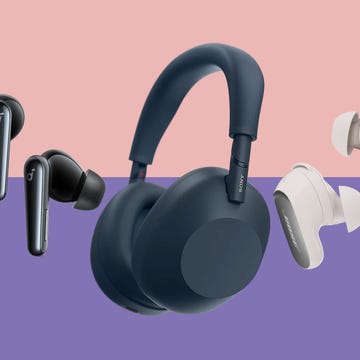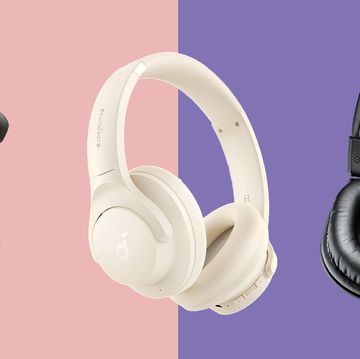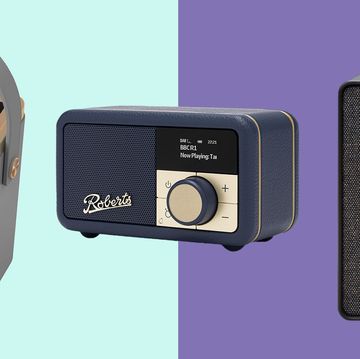We earn a commission for products purchased through some links in this article.
The best TVs under £500 you can buy in 2025
You don’t have to pay a fortune for a quality telly

Upgrading your viewing with one of the best 4K smart TVs doesn’t need to cost loads of money. There’s a brilliant selection of models available for under £500 which don’t skimp on features, connectivity and performance.
Best TVs under £500
Top streaming apps from the likes of Netflix, Prime Video and Disney+ are standard attractions, as are catch-up TV services from all the UK’s mainstream channels and voice control. In this roundup, we’ll guide you through some of the best TVs you can buy for under £500.

How we test TVs
To help you buy the best TV for under £500, we put all models through a series of tests to determine their strengths and weaknesses.
Picture quality is our top priority, to ensure you’ll see TV shows, sports and movies in pristine clarity. To assess image quality, we view a variety of material that showcases a TV’s ability to shine with high brightness, and intrigue with deep, nuanced black levels.
One key differentiator between models and brands is their ability to handle HDR (High Dynamic Range) content, even at the cheapest price points. The best offer a dynamic image that has punch and depth; the worst have images that look flat and dull. We measure peak brightness using industry-standard patterns, comparing each model against others in their class.
We also consider how TVs perform in different viewing environments – bright rooms and dark theatres – and how they might look in your living space. Ease of use is essential, so we look closely at the smart TV platform each model uses.
The best TVs also have to be intuitive to set up and use. We look at whether the onscreen prompts are clear and concise. We also judge how good streaming service support is, and consider general everyday use.
Finally, we turn our attention to sound. This is one area where cheaper models tend to fall behind their more expensive stablemates, as they are usually restricted to stereo speakers with limited amplification.
Pros
Sky TV with no dish required
Dolby Atmos sound system
Best-in-class voice control
Cons
It’s a monthly subscription
Quite big and heavy
UHD and ad-skipping incremental extras
Score: 86/100
If you need a new TV, why not get one included in your Sky TV subscription, similar to a mobile phone plan? Prices start at £19 (but there’s some devil in the detail).
That’s the idea behind Sky Glass. With no dish required, Sky Glass receives its Sky channels over wifi from your Internet service provider (which doesn’t have to be Sky). This means you’re not dependent on a traditional aerial connection either. In addition to a wide variety of Sky channels, there are also plenty of built-in apps.
Available in five colour finishes (including Ocean Blue and Dusky Pink), this is a good-looking set, although it's heavier than rivals, so you might want to think twice about hanging one on the wall.
Sky Glass is built around a 4K QLED panel with Dolby Vision HDR, and offers impressive picture quality, with excellent colour fidelity, and contrast. Sky is also dropping firmware updates to improve performance. HDR peak brightness is impressive, making the set quite a picture performer. It also comes with a powerful 215W Dolby Atmos soundbar built-in, for immersive cinema sound.
Connectivity includes three HDMI inputs, one with eARC support. The usability is also excellent, we found it easy to assign favourite shows to a playlist, essentially a cloud-based video recorder, and there are various playlist profiles available for family members.
The screen is also built for voice control. A ‘Hello Sky’ command will switch on the screen, and you can use it to select channels, search for content, and even fast forward or rewind. Prices start at £19 but can rise dramatically depending on which Sky subscription package you opt to take out.
Key specifications
| Screen sizes | 43-inch, 55-inch, and 65-inch |
|---|---|
| Resolution | 4K |
| Display type | QLED |
| HDMI ports | Three |
| Voice assistance | Yes |
| Smart platform | Sky TV Entertainment OS |
Pros
Amazon Fire TV smart TV platform
Freeview Play
Dolby Vision
Cons
Can be a little slow
Score: 80/100
Feature-packed and budget-friendly, this 55-inch TV from Toshiba is built around Amazon’s Fire TV OS and offers a performance that eclipses its modest price point.
The brand’s “TRU Picture Engine”, with the “TRU Resolution” upscaling algorithm, ensures razor-sharp 4K images and the high-quality upscaling of HD sources. The set’s HDR performance was measured at 430 nits, which is brighter than many of its competitors. Adding refinement to its HDR performance is Dolby Vision.
The design is generic but it’s also sleek, with a shiny black plastic bezel and a dark grey pedestal stand. When it comes to connectivity, there are three HDMI inputs, and the usability is very good, with a Fire TV voice remote simplifying navigation around a huge selection of streaming services. Freeview Play ensures all mainstream catch-up services are provided.
There’s no support for high frame rate gaming (as this is a standard 60Hz panel), but the input lag is low, making it a good choice for console gaming. The motion handling is above average for the price point – that’s good news for fans of fast-moving sports.
The built-in stereo sound system is supplied by hi-fi specialist Onkyo, and sounds decent – there’s also Dolby Atmos immersive sound, ideal if you’re looking to connect a compatible Atmos-enabled soundbar via the eARC HDMI port.
Key specifications
| Screen sizes | 43-inch, 50-inch, 55-inch, 65-inch |
|---|---|
| Resolution | 4K |
| Display type | LED |
| HDMI ports | Three |
| Voice assistance | Yes |
| Smart platform | Amazon Fire TV |
Pros
Mini LED picture performance
VIDAA U smart TV system
Dolby Atmos audio
Cons
For the price, very few downsides
No HDR10+ support
Score: 76/100
The U6 is an entry-level Mini LED from Hisense, and if you shop smartly you can bag the 65-incher for less than £500, which is the specific model we’re reviewing. There’s also a 55-inch model, which you can pick up for £399.
The set certainly doesn’t look cheap, with its thin bezel and slim chassis design. Ideal for boxset binge-watching, the TV uses Hisense’s VIDAA U smart platform, which offers a strong selection of the best streaming apps. There’s also a Freeview Play tuner, with a full complement of catch-up TV services too, including BBC iPlayer and ITVx.
While the price tag is low, the specification is high. There’s an automatic low latency mode that’ll appeal to keen gamers, along with a variable refresh rate on all three HDMI ports. The panel is 60Hz, though, so there’s no high frame rate support for next-gen gaming from the PlayStation 5 or Xbox Series X/S.
The HDR format support covers Dolby Vision, HDR10, and HLG – the peak HDR brightness is impressive, and the set’s average picture level is high. In our tests, brightly lit scenes look tremendous.
As the U6 uses a Quantum Dot LCD panel, colour vibrancy is high with strong reds and blues. Upscaling, via Hisense’s “Hi-View Engine”, is also effective, and there’s smooth motion processing to reduce judder during movies and sports.
The audio quality is fine by default, with decent volume and good vocal clarity, but adding a soundbar will result in a big step forward. The screen supports Dolby Atmos, over HDMI eARC, for excellent performance through a compatible sound system. Overall, it’s a great buy for the price.
Key specifications
| Screen sizes | 55-inch, 65-inch |
|---|---|
| Resolution | 4K |
| Display type | QLED |
| HDMI ports | Three |
| Voice assistance | Yes |
| Smart platform | VIDAA U OS |

What are the differences between cheap and expensive TVs?
While they may look like much of a muchness, and do largely the same job, there are actually some big differences between budget TVs and their more expensive brethren. Range-topping flagship tellies tend to benefit from the very latest panel technologies and utilise powerful processors, which help them deliver cutting-edge picture quality and sophisticated artificial intelligence (AI) functionality.
They also boast superior build quality, often characterised by their pedestal stands which tend to be metal rather than lightweight plastic. These bargain buys also have superior immersive sound systems built-in. Unfortunately, the price premium for all this goodness can be considerable.
Screens at the budget end of the market lack such refinements, but can often be considered far better value. Indeed, the vast majority of TVs sold are cheaper models, but they still impress, particularly now that 4K resolution is the de facto standard for all but the smallest of screens. These bargain buys can offer outstanding image clarity and share almost identical smart platforms as more expensive models with exactly the same selection of streaming apps, catch-up services and connectivity.
The Achilles heel of all budget TVs is their audio performance. The good news is that this is easily remedied with a top-quality soundbar, so budget accordingly.
Things to consider when buying a TV under £500
Yes, you can get a brilliant TV for under £500. But here's what you need to think about before making your choice:
Should I buy an HD 1080p TV or a 4K Ultra HD model?
All TVs with over 40-inch screen sizes these days offer 4K resolution images. That’s to say they have a screen resolution with four times the number of pixels as older HD screens. These sets look their best with native 4K programmes, which can be found on BBC iPlayer, and most of the leading streaming services (including Netflix, Disney+, Amazon Prime Video and Apple TV+).
4K TVs will also upscale HD sources, such as those you’ll find on Freeview and related catch-up channels. Upscales can look nearly as good, depending on the screen itself.
What’s the benefit of a 4K UHD TV?
Not only do 4K images look sharper, but they allow you to either sit comfortably closer to the screen (often necessary if you want to see all the extra detail in the image) or buy a larger screen size than the model you’re replacing.
For more on where to place your TV and furniture, read our guide on how to buy the right TV size for your room.
What TV smart platform is best for me?
There’s a wide variety of smart TV platforms available, many of which are brand-specific. The most common is Android TV, and its newer relation, Google TV, which is favoured by a variety of manufacturers, including Philips and Sony. There’s also Tizen (Samsung), webOS (LG), Fire TV (Amazon), and Roku.
These all tend to offer the same selection of streaming apps and services and are excellent in their own right. Your preference may depend on what you’re most used to using.
What makes a TV good for sports?
With fast-moving sports, be it football, the Olympics or Formula 1, you’re better off with a TV that offers a variety of motion-smoothing (or interpolation) modes. These can prevent image judder, making it easier to follow onscreen action.
LED, QLED or OLED: What do you need?
At the budget end of the market, your choice is likely to be limited to regular LED and QLED (or the LG variation, QNED).
OLED models will usually be priced well above £500. QLED screens are distinguished by superior colour reproduction.
Mini LED is some of the most advanced tech for precise brightness and contrast, and while black levels will still be deeper on OLED sets, you can get excellent picture quality from these new screens.
How to buy the best TV under £500
While we’ve already gone through some of the key points above, below we’ve got a jargon-busting guide to all the most essential specifications to keep in mind while you’re shopping around for your new telly.
Display tech and resolution
The display tech has a huge impact on the quality of the picture so you’ll want to check if the TV is an LED (light-emitting diode), QLED (Quantum-dot Light-Emitting Diode), or OLED (Organic Light-Emitting Diode), although that last category is reserved for the higher end of the market.LED is the most common type of affordable TV, using LEDs to light up an LCD panel behind the screen. QLED is similar and usually found in TVs from Samsung, Hisense and TCL.
While most of us would struggle to tell the difference between LED and QLED, high-end OLED TVs have the best quality – including deep blacks and crisp whites.
This resolution is the clarity of your picture quality. The lowest you want to go is 1080p, known as Full HD. Anything below that will make your favourite shows look blurry or out of focus. 4K, known as Ultra HD, is now commonplace at the £500-and-under price point.
It makes the picture look much sharper. Just try to make sure you are watching the HD or 4K version of a channel, movie or show. Netflix, Prime Video and Disney+ all host lots of 4K content.
Screen size
How big is the room for your new TV? Don’t buy a 55-inch if it has to squeeze into an alcove in your living room, but likewise, a 32-inch TV in a massive space will only result in serious eye strain.
First, know that TVs are measured in inches and diagonally – from corner to corner – and it’s generally recommended that your viewing area, like a sofa or bed, is roughly 1.5 times the vertical screen size away from the TV. So, for a 55-inch 4K TV, you should aim to be around two metres away from the screen.
App support
Every TV on this list is a “smart” TV, meaning that it connects to your home wifi and has access to apps such as BBC iPlayer, Spotify, ITV Hub, Netflix, Prime Video or Disney+, but you should always check the compatibility of the TV before buying as not every model lets you download every app. You can get around this by picking up a streaming device, such as Roku Streaming Stick 4K or Amazon Fire TV Stick.
Refresh rate
This is how many times each second the screen refreshes the image. You will see it measured in hertz (Hz). There are two common types: 60Hz and 120Hz, with the bigger number usually only found in more expensive models.
The higher the number, the smoother the picture on the screen looks to your eyes because the screen shows more frames per second (fps), affecting how motion is shown.
Connectivity
Most affordable TVs under £500 will have at least two HDMI ports for connecting other devices such as streaming sticks, consoles like the PlayStation 5 and Xbox Series X and set-top-boxes so they show on the TV.
Two more common connectivity features are Bluetooth – used to pair soundbars, headphones or portable speakers – and a port that lets you connect to your wifi via an ethernet cable, giving you the fastest and most reliable streaming and download connection.
Wall mounting
While most TVs stand on feet, some let you mount the set to a wall using a bracket. The common standard is Vesa, with popular sizes being 200 x 200 mm, 400 x 400 mm and 600 x 400 mm (horizontal x vertical).
Which wall bracket you need to buy always depends on TV size, so measure the gaps between four pre-built screw holes on the back of your set. Make sure the bracket supports the TV’s size and weight – if the bracket can’t support the TV it will fall – and check that your wall is strong enough to hold the weight, too.
Steve May is a technology and home entertainment specialist with over 30 years of experience writing about TVs, Hi-Fi and music.
Steve is the Editor of the lifestyle guide The Luxe Review and is a regular contributor to Trusted Reviews, Home Cinema Choice, Stereonet and T3. He’s also the editor of the professional home cinema website Inside CI.
When not writing about gadgets and tech he can usually be found wittering about whiskies, bingeing boxsets, or cataloguing his comic book collection.
Follow Steve on Instagram at @stevemay_uk and on Twitter/X at @stevemay_UK


Best wireless earbuds to shop in 2025

10 best wireless speakers to buy

Best open earbuds to shop in 2025

The best iPads to buy in 2025











